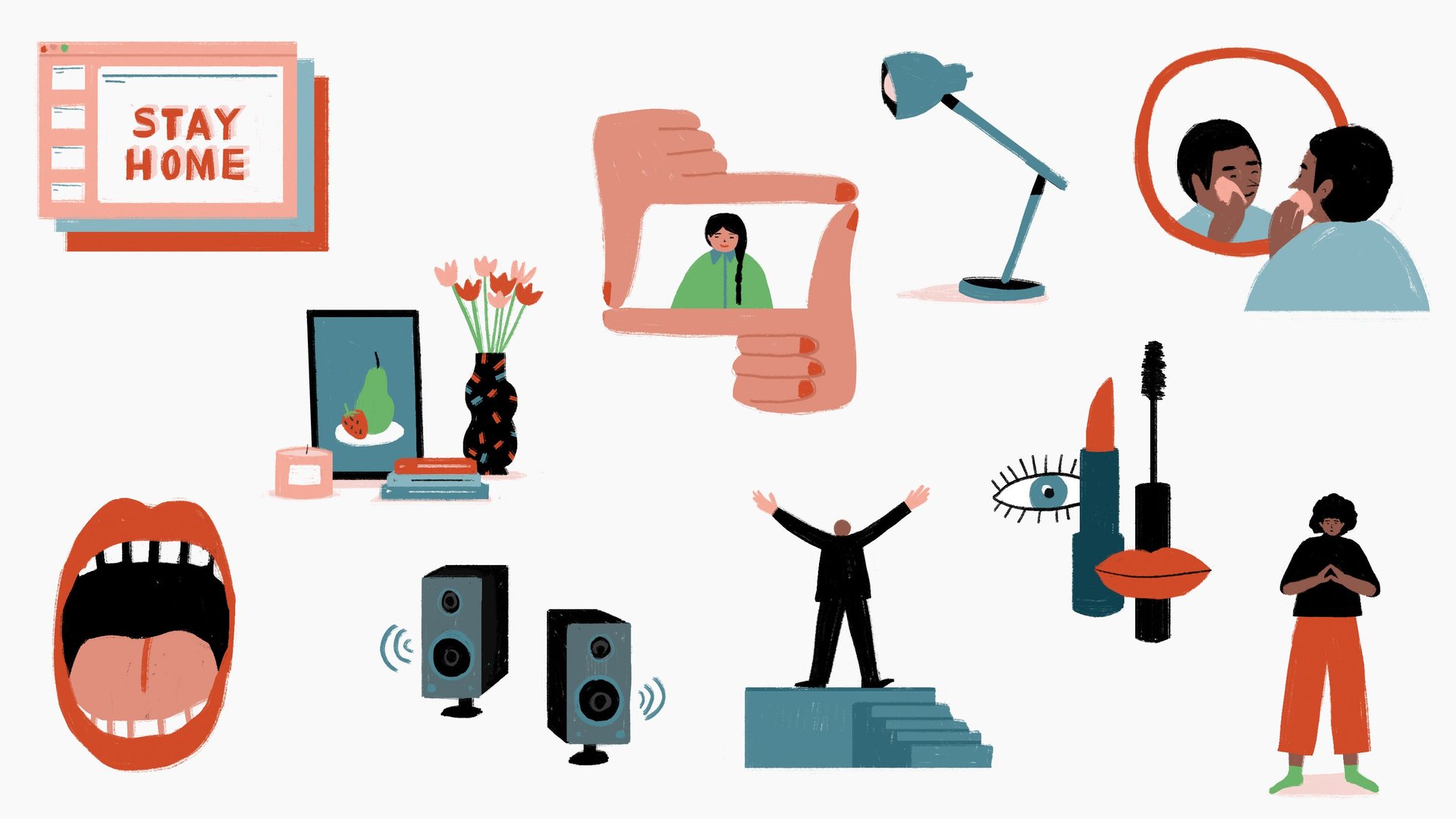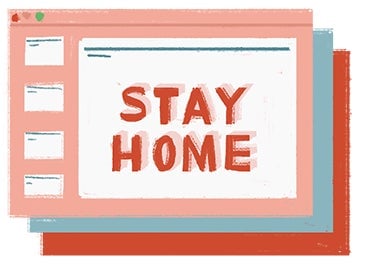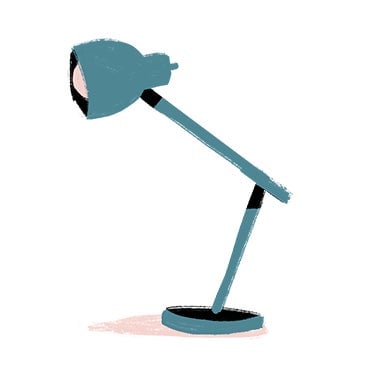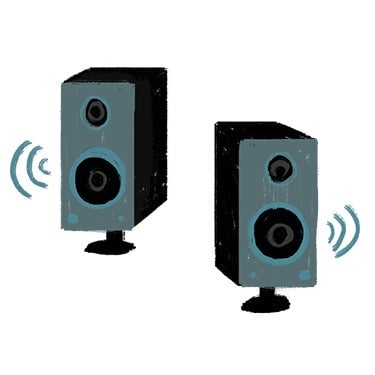How to set the stage for a professional teleconference
For the most part, virtual presentations and conferences are low-fi solo productions. But the coronavirus lockdown has made them a central part of our work life.


For the most part, virtual presentations and conferences are low-fi solo productions. But the coronavirus lockdown has made them a central part of our work life.
In many ways, our addiction to social media has given us a measure of fluency in online self-presentation—thank goodness we have all that experience in taking selfies and Instagram videos. Still, being asked to be actor, director, set designer, and cameraman of our own production is a tough ask of even the most seasoned speaker.
Most of us could use a bit of coaching on improving our online presentation and production skills. Here are a few strategies from some of the internet’s most notable tutors.

Learn the lingo
One of the first steps to mastering a new skill is learning its parlance. Here are a few common terms:
Brady Bunch view: A setting on Zoom where you can see all the participants on the screen, derived from the opening credits of the 1970’s American sitcom of the same name. Also referred to as gallery view or “Hollywood Squares” mode.
BYOD, Bring Your Own Device: The practice of using personal computers, tablets and phones for business purposes.
Ring lights: A lighting rig popular with the YouTube make-up tutors. Originally developed for surgery rooms and dentist chairs, fans of the halo-shaped contraption say it imbues the presenter a “glowing-from-within” aspect. Selfie aficionados tote smaller versions of the ring lights designed to clip over the smartphone camera.
Ring light eyes: A telltale white orb reflected in a person’s pupil indicating a ring light is being used.
Mirror effect: To flip one’s appearance on a video call. This is useful if you are flashing text meant to be read or using your hands to convey instructions.
Synchronous vs asynchronous: Synchronous is a live session where interaction among presenters and participants is encouraged; think company meetings. Asynchronous refers to self-paced learning mode where participants can parse pre-recorded content at their leisure; think that employee training module HR keeps reminding you to complete.
Telepresence: A virtual conference set-up designed to make participants feel like they’re all in the same room. Companies who invest in the technology believe that simulating an in-person meeting improves collaboration and group participation. Tokyo’s Business Breakthrough University recently deployedNewme telepresence robots so students quarantined at home can still participate in their graduation ceremony.
Virtual presence: A meeting set-up that allows participants to enter and explore immersive environments.
zWarDial: An automated tool used to find the unique meeting ID of open Zoom calls. Without a password, meetings are susceptible to hackers. “Zoom Bombers” can locate up to 100 meetings per hour with zWarDial.

Ready
The top tip for virtual presentations: Keep it short. “We are telling everybody to go down on time if they can, explains Maegan Stephens, an executive speaker coach at Duarte, a California firm specializing in presentation design and training. “Even if everyone is at home right now, there’s so much going on. The burden of having to sit down for a 60-minute meeting is exceptionally high.”
If there’s a lot to go through, consider grouping content into sections or even pre-recording videos that participants can view on their own time, she advises. While you’re at it, consider if you need to gather a group at all. “The point of any presentation is to move an audience from point A to point B,” Doug Neff, Duarte’s content director, explained during a recent webinar. “If that doesn’t matter to you, then don’t use [a presentation]. Send an email or a text instead.”

If you are going to use a presentation, prepare your slides in advance with tips from New York governor Andrew Cuomo’s PowerPoint graphic designer. The governor’s much-talked about Covid-19 slides are effective because they prioritize legibility over slickness; keeping in mind that some users may be seeing them on a small mobile device screen. “The lesson here: Reinforce a key message by letting it stand alone on a slide,” Fortune aptly notes.
Then, prepare yourself. Even if people aren’t seeing you on a big, high-definition screen, getting yourself camera ready with a bit of makeup will help get you in the right mode to present. For women, celebrity makeup artist Vincent Oqueno recommends a bright blush. “Here’s the thing about FaceTime and Zoom calls: Although they’re HD, you can look sort of washed out…Adding warmth to your cheeks will make you look like you have more life.”

Men can prep their faces too. YouTuber Joseph Linaschke, aka “PhotoJoseph,” recommends a quick routine. “If you do nothing else, blot out all the extra oil from your face” with some oil-absorbing sheets, he advises in a demo. Oily patches on the temple, nose, and chin or T-zone register as distracting “hot spots” on camera.

Practice looking into the lens. Maintaining eye contact with audiences improves a presenter’s trustworthiness, but this skill is harder to achieve on video calls because a majority of us are stressing about how we look on screen. Tara Well, an associate professor of psychology at Barnard College, prescribes “mirror meditation,” a daily habit of staring in the mirror for 10 minutes. “That doesn’t mean engaging in a bunch of ‘woo-woo’ affirmations,” writes Quartz reporter Sarah Todd. “Channel a generous, nonjudgmental feeling toward your own image.”
Neff has a practical hack: “I take that little selfie window that you have in Zoom and I move it all the way up to the top of my screen…right next to that camera lens.”

Set
Once you’ve gotten yourself together, it’s time to take a look at your surroundings, with an eye to what others will be seeing.

First, check your lighting. Celebrity portrait photographer Matthew Rolston says a “little bit of glow” is easily achievable. “A simple desk lamp over the lens of your device is going to be flattering for everybody. You could even use a lamp with a shade or it could be a window—anything that would light you from the front,” he explains to Daily Candy. “You don’t want to be back-lit, you don’t want to be side-lit, you don’t want to be lit by the screen from underneath and look like a blue Frankenstein.”

Then, take a minute to add some visual interest to your background. How much do you need? Interior design impresario Jonathan Adler says just go for it.“F is for festoon. This might be the only time your colleagues get to see chez vous so make sure everything looks KAPOW!” he suggests. “A banana bud vase, a provocative needlepoint pillow, a muse vase with fresh flowers—these accessories will lead to a promotion once this nightmare is over.”

Next check how you’re framed on screen. Many professionals abide by “the rule of thirds” which involves imagining a horizontal and vertical grid dividing your screen into nine parts. (Your mobile phone camera demonstrates this grid.)
The principle recommends positioning your face slightly off center, in the vicinity of one of the intersecting points on top of the frame. “Amateur photographers make the mistake of placing their subjects in the center of the frame because ‘it looks right.’ When a composition is too symmetrical, we see it, like it, get bored and look elsewhere,” filmmaker Adam Irvine in an article on the International Documentary Association’s website. “With a composition that’s slightly ‘off,’ following the rule of thirds, our eyes get a little frustrated and intrigued.”
Tweak the camera angle. Is there anything worse than looking up at someone’s nose? Position your laptop or device at eye level and sit back a bit so you’re seen from the chest or waist up. “This is more natural for the viewer, according to Priscilla Barolo, Zoom’s head of communications. “This is especially beneficial if you tend to gesture a lot.”
For examples of what works and what doesn’t, look to Twitter’s self-appointed virtual meeting design critics. Washington, DC-based photographer Claude Taylor is the voice behind Room Rater, a hilarious Twitter account that dissects the background of talking head appearances. Though at times tainted with political bias—idk if James Carville’s kitchen set-up really deserves 10/10—his observations are often spot on:
There’s a common at-home video conferencing trope that needs some scrutiny. Bookcase Credibility is an anonymous Twitter account that calls out instances when the speaker seems to be using tomes in their background to bolster their credibility—like a literary word cloud.

Action
Finally, it’s time to take the spotlight.

“I recommend standing when you present,” says Matt Abrahams, lecturer at Stanford University Graduate School of Business. “This allows you to leverage deep breathing and even gestures and movement. It doesn’t even matter if you’re showing video. It just helps to stand and present.”
“Speak directly into the microphone, with enough distance to not introduce clipping,” advises sound experts from Yamaha. “Generally, it’s a good idea to move the microphone at least a few inches away from your mouth, and position it slightly lower so that vocal plosives (i.e. popping vocal sounds with “k”, “p”, etc) are less emphasized.”

Nicole Lowenbraun, a San Francisco-based speech pathologist and executive speaker coach, offers voice training tips such as being aware of uptalk, which “can give the impression that you’re asking a question rather than giving a statement and that you’re not standing behind your own ideas. Upward inflections will rob you of your authority. She advises speakers to “embrace your accent, but remember to articulate.”
Says Lowenbraun, “we are all communicating globally now, so if you speak a different language than your audience, you have to make sure that they can understand every single syllable that you’re saying.”

Varying your intonation when presenting is a simple way to introduce novelty and hold people’s attention, adds Lowenbraun. “The best way to put people to sleep is to speak in a monotone. We’re not all delivering really exciting information, and that’s okay,” she explained at a recent webinar about virtual communications. “You can increase or decrease your volume. You can pause before or after an important word to isolate it… punch your words and make it sound exciting.”

“Just assume you’re crushing it,” says Stephens, Duarte’s executive speaker coach. “You can’t let negative self talk get in the way or start worrying about the silence. You did your homework, you’ve got good content. Keep going. That’s going to help you feel better as the speaker.”
Illustrations by Maya Ish-Shalom